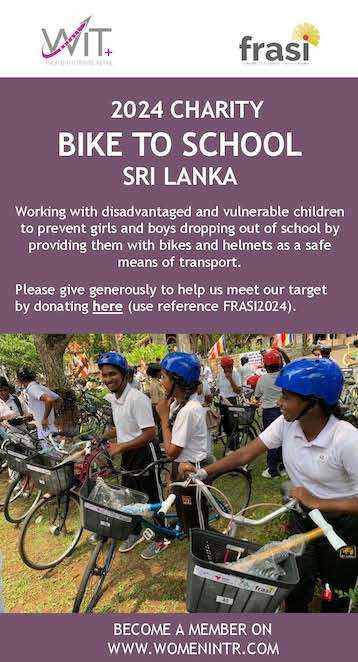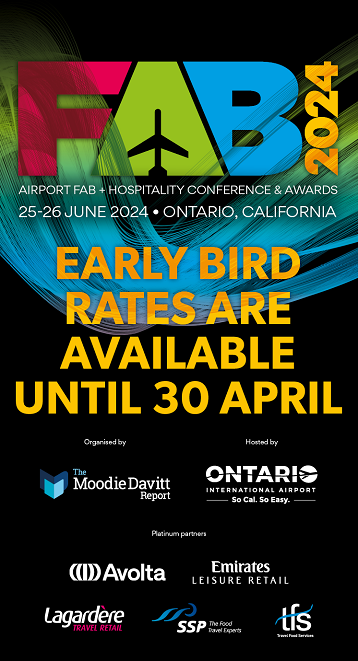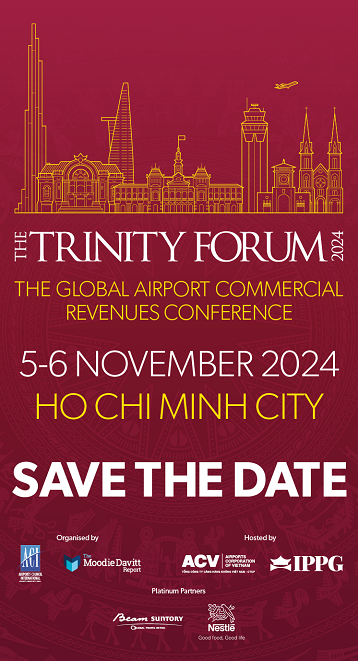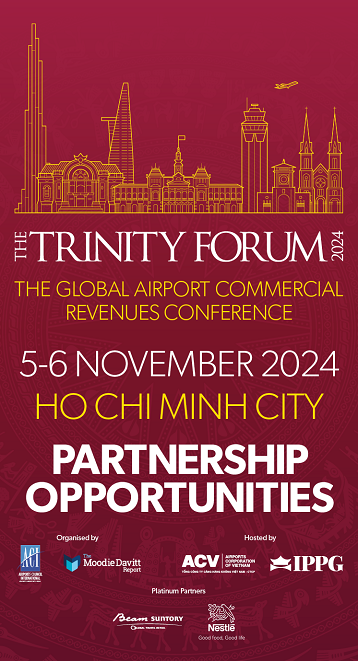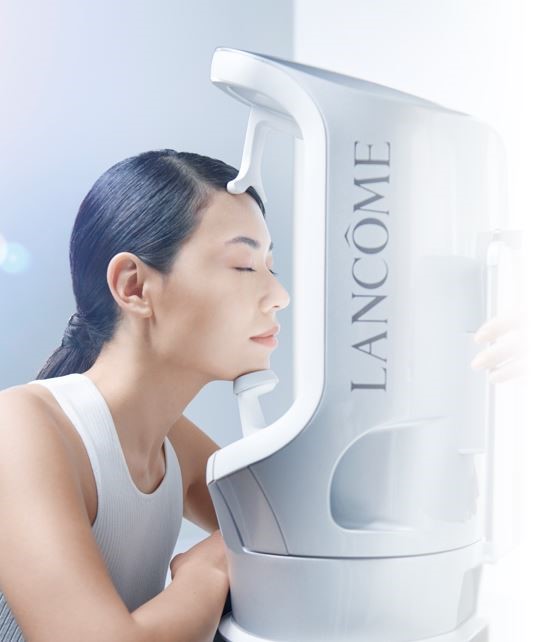The year 2014 saw L’Oréal introduce two new beauty categories into travel retail: dermocosmetics and haircare. In the subsequent three years, L’Oréal Travel Retail Active Cosmetics and Professional Products Divisions General Manager Piermarco Luzzatto-Giuliani has seen these categories — led by Vichy, La Roche-Posay and Kérastase — embraced by consumers.
At last week’s official opening of the latest Kérastase counter in Paris Charles de Gaulle Airport Terminal 2F, we caught up with Luzzatto-Giuliani to discuss how new categories such as haircare and dermatological skincare are opening up the channel and changing the look of travel retail.

The Moodie Davitt Report: It’s been quite some three years! Congratulations on the latest opening.
Piermarco Luzzatto-Giuliani: It’s been a great adventure launching these new categories. To begin with, it took a bit of convincing introducing the new categories to everybody but we really took off in 2015. Now, we are three years down the line and 2017 will be a very good year for us both on Kérastase and on Active Cosmetics — from developing new products to opening fantastic new doors.
What is the potential for haircare in travel retail? How can it make the move from niche to mainstream?
The category was there in a small way before but when we started talking to travel retailers at the beginning it wasn’t really on their radar. In a short time however some really grasped what this category can bring to their customers and to their businesses.
When you see that some retailers are now opening their third or fourth Kérastase door it illustrates that they want this brand in their portfolio, they are placing it in their best doors. We have opened in Sao Paolo Airport Terminal 3; Lisbon Airport; Haitang Bay Downtown; now Paris Charles de Gaulle Airport T2F: We have developed a series of very big travel retail doors over a short space of time.
I think retailers have understood that to make the haircare category successful you have to give it some space. Haircare isn’t a destination for customers yet, they sort of stumble upon it. We need central locations, sufficient space to express the brand, great staffing, we employ professional hairdressers who work alongside trained beauty advisors, and then there is our signature diagnostic. We are a professional premium haircare brand and everything at Kérastase starts with the hair diagnostic. There is a 90% conversion rate on people who experience the diagnostic service buying products afterwards.
The diagnostic uses a Hair & Scalp Profiler to analyse the hair and scalp in less than five minutes, giving an expert diagnosis and including a personalised recommendation of the Kérastase products best suited to your hair and scalp needs. – Ed
We are learning and fine-tuning as we go, seeing the category develop and taking some quite magnificent spaces. I think that’s a very clear sign that there is something happening there.
At L’Orèal, we estimate the haircare market to be roughly $205 billion. Haircare is the second biggest beauty category after facial skincare. So in terms of potential it is huge and it makes a lot of sense to have the right haircare offer in travel retail.
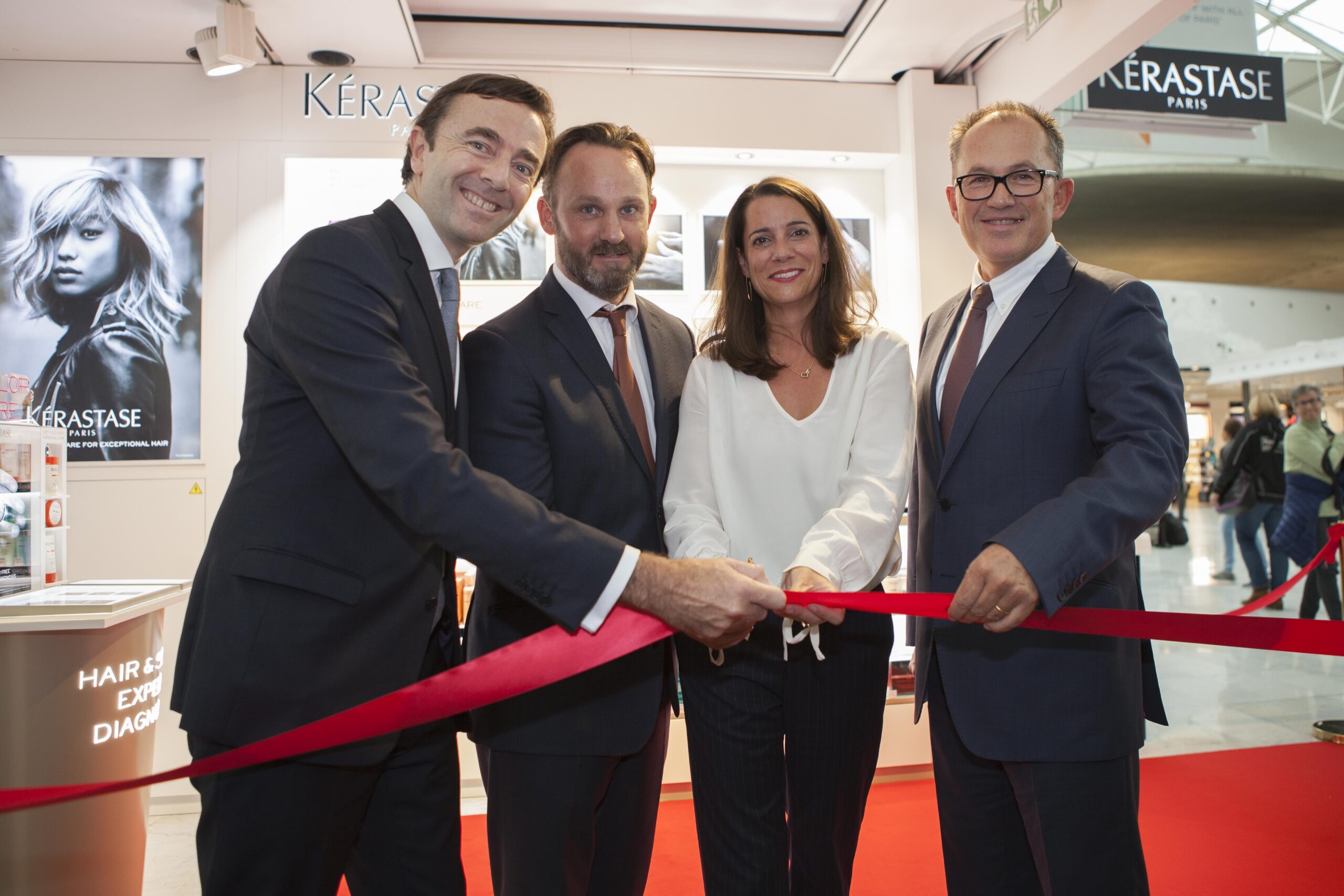
Do you feel retailers are doing enough to support Kérastase?
Yes. When you look at what Dufry gave us in Lisbon Airport: There we have a very beautiful space but what you see first is the diagnostic station. In Rio it’s the same. Now, at Paris Charles de Gaulle with Lagardère, travellers are greeted by the diagnostic station. The same goes for Heinemann in Copenhagen and in Asia through our partnerships with Shilla and Lotte. They have all understood the value of the experience.
The challenge is that up until now in travel retail, we had facial skincare, fragrances and now we have the boom of make-up. Because haircare is not a destination you have to tell people you have something new by giving haircare a good space in a high-traffic location. Passengers know that they are going to find make-up, lipsticks, mascara, perfumes. They don’t expect to see haircare so it needs a visible location and a decent amount of space.
One key thing: How can the retailers make it a distinctive category? There need to be merchandising codes in place to help the customer identify that this is a hair section. Make things simple for the consumer by telling them ‘here is a new hair section’ by using branding signage, animations and activations on key products, for example. Staffing is also key. It’s about stopping the consumer and providing them with expert advice and so our staff are trained to deliver a high level of service to rushed travellers in a short amount of time.
How do you ensure you are catering to specific haircare needs on a global scale?
We fine-tune our Kérastase catalogue to each territory. We study each shop very carefully to find out the nationalities that are travelling through it and adapt our product offer to make sure we cover the main needs. We also adapt our travel retail exclusives. If we see that we’ve missed out on a nationality, we bring it in. If there is a recurrent demand that we see on a specific type of product, we work with the retailer and bring it in. We work with our local markets beforehand to make sure we understand the needs of our consumers so we haven’t had any big surprises or gaps so far.

Where are you seeing haircare customers in travel retail coming from?
In South America haircare is huge. We have a spectacular interest from Brazilians in Kérastase. In Europe it’s doing very well as consumers there are already aware of the brand. In Asia, it’s a bit more mixed. Korean women know Kérastase very well, the Chinese do but [considering] the scale of China there is still a lot more to build on. Overall, Chinese, Brazilians, Russians and Koreans are our big travel retail nationalities. Of course, expectations and needs are very different depending on geography, culture and the impact of the climate. So we continuously adapt our catalogue and the services we give to be perfectly aligned with the customers we have coming to our counters.
In terms of Kérastase’s recent launch with Beirut Duty Free, what boxes did this location tick?
Beirut Duty Free shares our vision that haircare is a key category. From the start they saw the opportunity and wanted to do something big. They realised that a Kérastase counter would provide a great service and answer their consumers’ needs but also that it would help to increase penetration to the shop, to travel retail as a whole, and to boost conversion. Beirut Duty Free and Kérastase have a shared vision on the fact that it’s a great category. They gave us a fantastic location, right after customs, so it really ticked the box on high visibility. They gave us a magnificent space of around 24sq m. We put together a staff of four people plus a professional hairdresser and it took off from day one. It is an example of best practice. Obviously that is a very big location and those kind of spaces don’t exist all over the world but really what they did was to take a new category and maximise the impact it has on the consumer in terms of novelty, excitement and newness. It recruits to the brand, it recruits to the category, it creates incremental business for travel retailers.
What is the advantage to the consumer of a Kérastase counter in their airport?
In this industry, we often talk about what challenges we face and one of the biggest is how to get all those millions of passengers travelling through the airports into the shops. One of the ways to increase the number of people visiting the stores is to bring them categories which are important to them and which previously were not found there. Bring new, internationally recognised brands such as Kérastase to the customer. Give them great service, a wonderful experience and fabulous products so that afterwards they say: ‘I was right to stop there, I will come back, I loved the experience that travel retail offered.’ We can offer products and services to them that perhaps are not available to them in their local market.
With brands such as Kérastase and the dermocosmetics it’s not always the shop next door that carries those products. Customers often have to make a special journey to the hair salon or to the dermatologist, so by putting those products in travel retail we are also offering convenience. They can stop and stock up on the products they need as they pass through the airport.
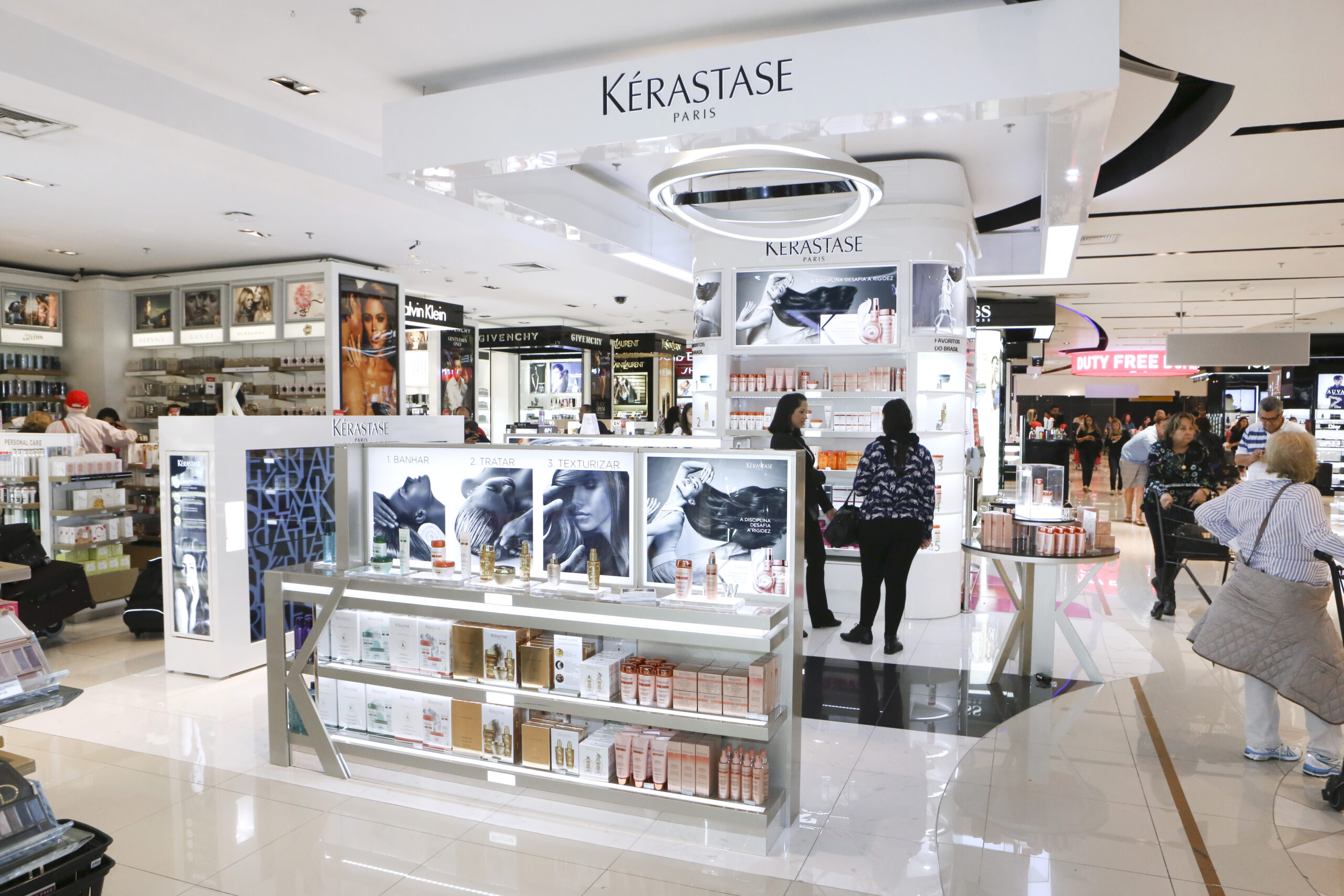
Where are you planning to open next?
We have openings basically every month. We are going to keep on developing in Latin America, we have some exciting openings coming up in Brazil. In Europe, we will move into Spain shortly, also Macau and then the Chinese airports. We are very selective and careful with where we place our shops; we target top international airports with very high levels of international travellers who are the people most likely to buy Kérastase. For this reason, our focus is not on domestic airports.
By the end of the year we will have opened more than 70 Kérastase shops and DermaCenters since 2014, all the while being very selective. These shops are very particular animals! It’s not about full-steam roll-out across the planet. We are committed to making them work so it’s important to put together a great partnership with the retailers where they understand our categories and our vision.
The diagnostic area is non-commercial space. It’s a space where you sit people down who don’t really want to be sat down so it’s not always easy to convince the retailers but it is very important in terms of the experience you are giving the customer and the satisfaction they are going to get from it. It’s also part of selling them the right products and it’s probably something that is very specific to us and the DNA of both Kérastase and the DermaCenters.
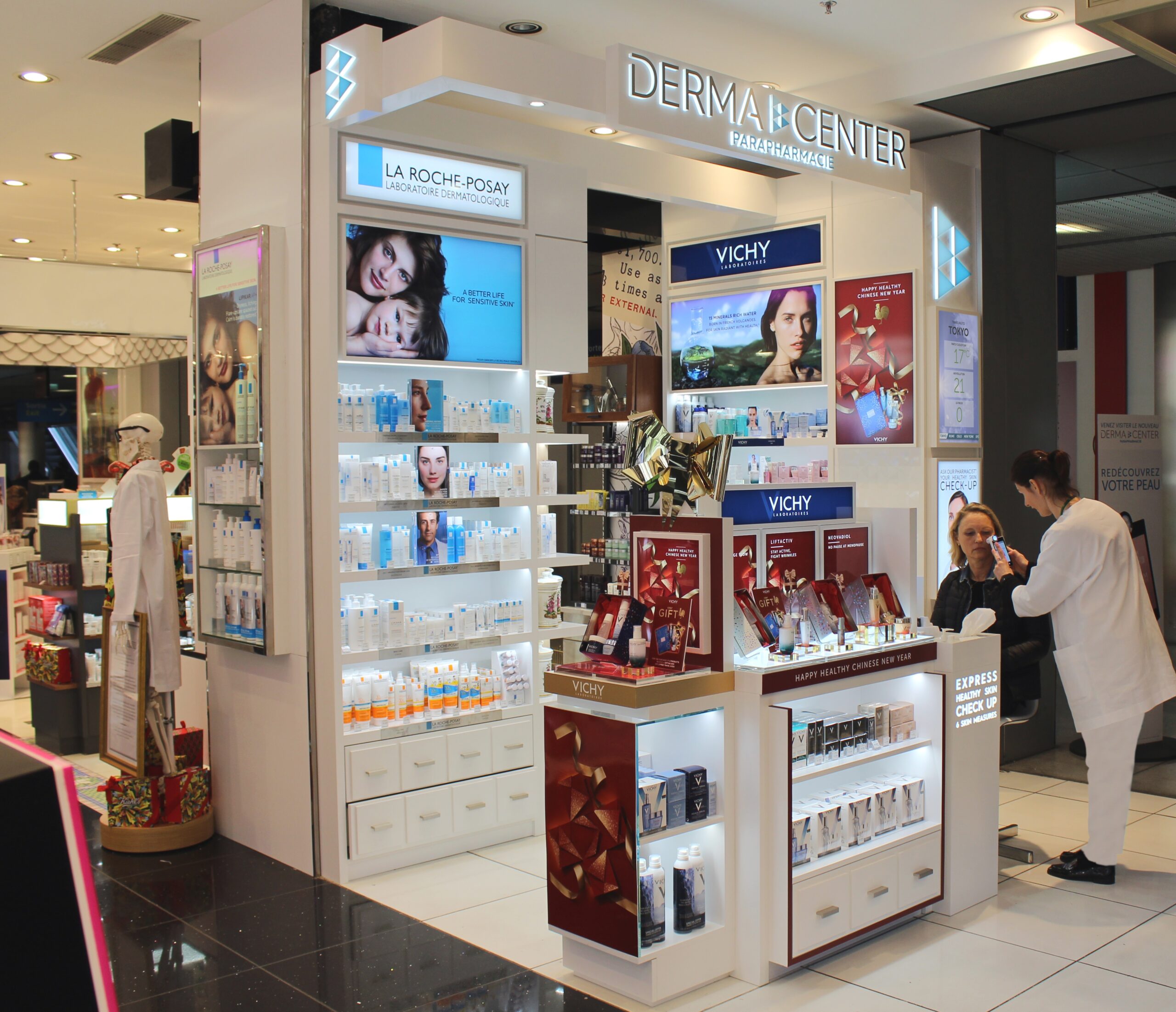
On the subject of the DermaCenters, do you think that a deeper focus on health is the way forward for beauty in travel retail?
I would take it one step further and say we believe that health is the future of beauty, be it in travel retail or outside. Why? Because we see from consumer expectations that they want a beauty that is true to them, that is respectful of who they are, respectful of their skin and, for a growing number of consumers, respectful of the planet. They want a new type of beauty which will keep them beautiful and looking great forever but is also safe and trustworthy. Dermocosmetics originated from the pharmacy channel which stands for safety and our DermaCenters sell products recommended by dermatologists and pharmacists.
We also provide a balance between performance and tolerance so you have the efficacy of specific ingredients but with a limited number of ingredients, little or no fragrance and hypo-allergenics.
We see the demand in our shops: More than 50 DermaCenters have opened in the last three years across all geographies. Going back to the subject of consumer experience, we try to give them added service and advice. Travellers can come into the DermaCenter and say: ‘If I’m going to Thailand what type of suncare should I use?’ or ‘What type of moisturiser should I use if I’m going to Moscow in the winter?’.
We have two very complementary brands: Vichy is a cosmetic skincare range for normal to sensitive skin and La Roche-Posay is the number one brand recommended by dermatologists across the world, specialising in sensitive to intolerant skin. It’s a positive way of taking care of the health of your skin.
Does it cannibalise the existing skincare business? Not at all. People who buy dermocosmetics have specific needs. They bring penetration to the shops and are excellent in terms of conversion because of the expertise of the DermaCenter staff, the advice, the routines we recommend and unique products too. We did a fantastic suncare campaign this summer in Paris and Oslo but it is a very small category in travel retail, so again, it’s incremental business for retailers.

How big a part does social media play in these brands?
It is really linked to the platform, some platforms are very digitally connected and some aren’t. However, we try to link with social media as often as we can for two reasons: the first is that we (Kérastase, Vichy, La Roche-Posay) are a new category, people don’t know we are here so it helps us to communicate and let them know we’re present in their airport. We have worked with Copenhagen Airport, Tel Aviv Ben Gurion Airport, Beirut Duty Free on their Facebook pages to leverage awareness of the existence of these new categories and we do it in partnership with the retailers so we’ve done it with King Power, with Dufry, with DFS and we try and do it at every launch as part of the launch package.
We did a Kérastase event at Haitang Bay with bloggers which was huge. We invited the bloggers to talk about an event we hosted there with a key Taiwanese celebrity hairstylist. The event was relayed live on all social media channels with tens of millions of people looking at it. It’s a very powerful tool and we need to keep using it in order to build awareness of these brands in travel retail.
The ‘Trinity’ we often speak about: Kérastase did something fantastic in Copenhagen when we launched the brand there. Copenhagen Airport gave us screens all across the airport, we announced the arrival of Kérastase on the airport’s website, we brought in professional hairdressers and did a huge event with Heinemann and we activated the brand with some special offers. That was an excellent example of the Trinity coming together.


How important are pop-ups and retailtainment to your travel retail strategy?
Pop-ups have worked very well for us. I think they are a smart way to build a project with your retailer, align the ambition, test it, see how your customers react, what hooks them in and what doesn’t. We’ve learnt a lot from them and they have all converted into a permanent door for us so it’s always been a very positive experience. They are fun projects because you can also build an event around them.
What is the strategy for coordinating domestic and travel retail marketing and communications?
From day one we’ve always been very transparent in explaining what we have wanted to do, our ambitions, why we were taking these brands into travel retail. Obviously it’s a channel where you contact millions of people so it helps develop your brand awareness, your image and your business. It is always something that has been seen as very complimentary by the local markets so we share our marketing plans, align our launches and work together on events. It’s a great collaboration.
We then feed the consumers back into the local markets. There are brochures they can take entitled ‘Find your Best Salon’ in travel retail. In some cases, we refer them back to the salons with an offer for a complimentary Fusio-Dose Treatment. It’s a great way of recruiting to the brand.
We are here to celebrate the grand opening of a new Kérastase counter in Paris Charles de Gaulle Terminal 2F. Why have you chosen this location?
We opened a first shop in February in Terminal 2AC so this is our second at this airport. It’s part of the plan that we put together with Lagardère. This counter is a fantastic expression of the brand and it’s in a terminal where you have a huge amount of international passengers transiting through. Lagardère know Kérastase, they know the potential of this brand, the quality of the products and the service.
Lagardère Travel Retail wants to keep bringing new brands, new categories and enriching the customer experience. Travel retail is becoming so much more than the tobacco, alcohol and perfume of a few decades ago. It’s also about responding to who is flying today. The frequency of travelling has exploded because of low-cost carriers, the emergence of a new middle class, the development of a several new countries so you have a much wider variety of people travelling with different beauty needs. If we want to remain relevant, interesting and exciting, we need to bring that to travel retail.
Do you think there could be a place for an actual Kérastase salon treatment in travel retail?
Honestly? I doubt it. It would a good idea though, especially for arrivals. People usually arrive at the airport looking great…it’s after that 15-hour flight on a synthetic pillow that they’d need the treatment.

You have recently added a third string to your bow with Roger & Gallet. What can you tell us about your plans for the brand?
We are adding a third ambition to what we want to develop in the travel retail channel with a very exciting brand: Roger & Gallet. We are seeing the awakening of a sleeping beauty. Established in 1862, we are taking the heritage of Roger & Gallet and creating a whole new platform for the brand. It is a brand that was used by Napoleon, the French royal court, emperors and empresses; we have taken that heritage and given it a modern twist, retaining at the heart, the art of distilling natural ingredients into beautiful fragrances.

Who is the revisited Roger & Gallet aimed at?
We are targeting a much younger consumer audience in particular geographic locations: We are opening a pop-up this week in Haitang Bay which will be a fantastic event. In Asia, the brand awareness just didn’t exist. Last year we launched in China, we are now launching in Hong Kong, and we launched a couple of years ago in Japan and it worked well.
For travel retail we have edited the range. Our newly-launched Extrait de Cologne will be part of the offering. We are going to create a new experience, taking the heritage and making the brand very modern, young and digital. Digital is the key. We are confident that digitally it will have a huge impact, a big buzz. There will be a lot of videos, the look is very friendly, engaging, modern, colourful and joyful. This brand has a lot of happiness in it.
The fragrances of Roger & Gallet are excellent but they are not niche. You can understand the fragrances, they are inviting. It’s French, it’s Parisien, it’s authentic but accessible. It’s an inviting, engaging, humorous brand and I think that’s great for the travel retail environment, to have these brands which are inclusive and draw you in.
Will Roger & Gallet offer travel retail exclusives?
Gifting is very important for Roger & Gallet. It is a brand that is very well suited to gifting so we are going to have travel sizes, gift packs and coffrets wrapped in the Toile de Jouy design.
Roger & Gallet represents a real know-how and expertise in fragrance. You can argue that the first beauty rituals were invented by the brand a very long time ago with fragrance powders and fragrance soaps. Napoleon carried a bottle of Roger & Gallet cologne in his boot as he rode into battle. There is a great story that in the French imperial court, to disguise the unpleasant aromas of everyday life, they would perfume parrots and allow the birds to fly around dispersing the fragrance. We won’t be doing that in travel retail obviously.
Shame. Perfumed parrots and hair salons…could this be the future of travel retail reimagined? Just remember: You heard it here first.




